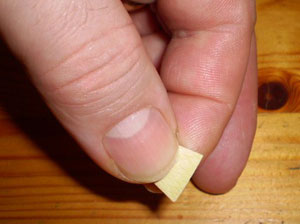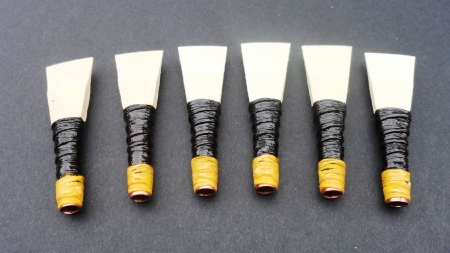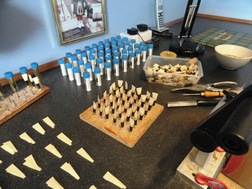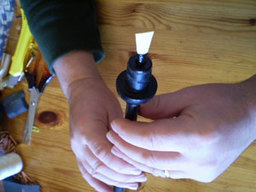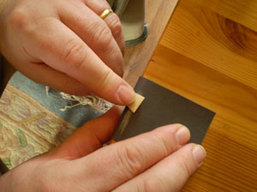|
MacLellan reeds are designed and manufactured to be the freest, most vibrant reeds in the world. The individual attention and custom finish of each reed ensures that optimum pitch and trueness of tone are achieved without protracted blowing in periods and only a short session of adjustment is needed to set up a true and rich tone from your bagpipe. The MacLellan reed requires no more set up skill than the ability to squeeze the centre of the reed blades when initially setting in the pipe chanter. The reeds have been designed so that squeezing is the only adjustment required. The reeds will take a large amount of this pressure and so gradually the piper will be able to set himself or herself just the right strength of reed from the outset. Each MacLellan reed is supplied in its own airtight, labelled tube container. The reeds come in strong, medium, easy, and our special “senior’s strength” which is almost resistant-free reed which is extremely easy to blow yet maintains a balanced full tone. This reed is suited especially to older players, and to those who are starting to play the pipes, and to inexperienced pipe bands. The reeds are suited to any make of pipe chanter but are tested three times in MacCallum, Naill, and Kron chanters before dispatch.As the MacLellan reeds are played, they will naturally take on moisture from the air being blown, and this will result in the tone “filling out” and becoming louder and rounder. It may be that after the initial play, the piper may find that the next time that the reed is played it has become stronger; this is perfectly normal and all that is required to bring it back to an optimal state is to squeeze it in the centre of the blades. A little experience will help in indicating to the piper how hard or soft and how long to hold the squeeze. MacLellan reeds are custom made to suit each customer, it will not be necessary to make large incremental adjustments to the reeds. When an order is received, the reeds are individually finished and pitched to each customer’s specification; there is no such thing as a stock of MacLellan reeds waiting for customers. The reeds are manufactured in such a way that after an order is received, it will be finished and completed to suit the customer from a stock of unfinished reeds which have been recently tied. As a result of the manufacturing process and of careful testing and customer control, each MacLellan reed is guaranteed to be free and vibrant and to produce a balanced scale. Maintenance and adjustment are minimal, and our aim is to be able to come as close as is possible to achieving a “plug and play” product.
|
|
|
|
